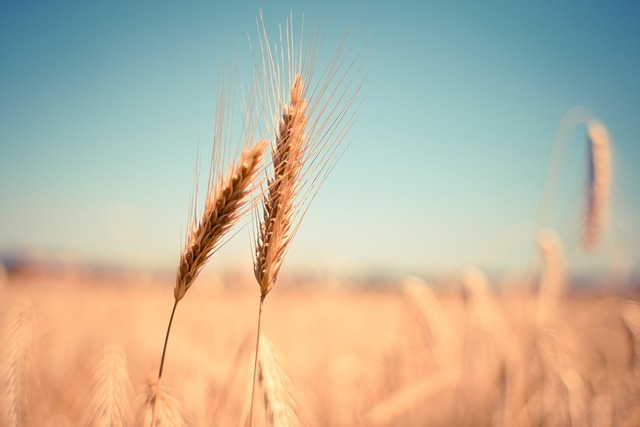By George Bovt
Ukrainian agricultural exports have caused tension within the European Union. The “grain deal” that allowed Ukraine to export its produce across the Black Sea has collapsed, exacerbating the issue. Kiev must now route more exports through neighboring countries, raising concerns that cheap Ukrainian products could flood European markets, harming local farmers.
Two weeks ago, Brussels lifted the restrictions on Ukrainian grain purchases that had been imposed in May. The market was said to be stabilizing and emergency measures were no longer needed. Nevertheless, Ukraine’s neighboring countries, including Poland, Hungary, and Slovakia, disagree and have extended the embargo unilaterally. Poland and Hungary have extended the embargo indefinitely, while Slovakia has done so until the end of the year.
Despite Kiev’s calls for solidarity in the face of the Russian threat and threats to sue the WTO, the interests of local farmers proved to be more important. Poland is heading for parliamentary elections in October. The ruling right-wing conservative party, Law and Justice, depends on rural support and is determined not to risk losing it. Although there is generally strong solidarity with Ukraine in the military conflict with Russia, there are sharp differences between Kiev and Warsaw. Prime Minister Mateusz Morawiecki stated his intention to continue to enforce this ban in the interests of the Polish farming community despite the European Union’s disagreement.
Meanwhile, in late September, Slovakia held elections that returned to power former Prime Minister Robert Fitzo, who had previously opposed sanctions against Russia.
Transit of agricultural products is allowed, but the rules are strict: Hungary, for example, which banned 24 types of Ukrainian food imports, will seal all shipments to prevent them from remaining in Hungary. Bulgaria and Romania, which were previously in favor of restrictions on Ukraine, are now in line with Brussels’ decision. Their main goal is the reduction of prices on the domestic market through the compensation of their farmers at the expense of the EU. Brussels has already allocated 100 million euros in special aid, in addition to the initial support package of 56.3 million euros in May, to compensate farmers in five countries neighboring Ukraine who have been “affected” by its dumping.
The EU has contributed to the “unfair competition” by abolishing the customs duties on the import of agricultural products from Ukraine in the spring of 2022. As a result, the cost of bulk purchase of Ukrainian wheat and corn in Poland last year was $270 and $250 per ton, respectively. This is lower than the average European prices of $324 and $307. Wheat prices in Hungary fell by 27-37% over the same period due to the impact of Ukrainian dumping. This year, Eastern European farmers are facing a difficult situation. This is due to the general decline in global grain and food prices.
In this context, the EU has been at pains to assist Ukraine in the management of its export problems as a result of the collapse of the grain agreement. Last year, “solidarity routes” with streamlined logistics were established which enabled Ukraine to export grain and oilseeds to third countries (some of which was destined for the EU). The importance of these routes has increased even more after the collapse of the grain agreement.
60 percent of these “alternative flows” pass through Romania via the ports on the Danube. However, only small ships can navigate the Danube, which increases the cost of export. The overland alternative is even more expensive, with transportation losses of $30-40 per ton, making it unprofitable to export grain at such a “discount. a “discount.” Eastern European neighbors requested subsidies from Brussels for this purpose, and their appeal was partly met (with an amount of 250 million euros). At the expense of the EU, the ports along the Danube will be modernized with the aim of doubling their transhipment capacities, which may eventually allow Ukraine the bypassing of the Black Sea export routes. This is not the most profitable option, however. For its part, Kiev has announced “temporary humanitarian corridors” running mainly through the territorial waters of NATO countries – Romania, Bulgaria and Turkey – but so far only five ships have passed through them.
Although supporting Ukraine is becoming increasingly costly for the EU, they have declared their intention to continue it “for as long as necessary” for political reasons. The EU must now agree on a package of economic aid worth some 50 billion euros and military aid worth 20 billion euros, and these decisions should be taken by EU consensus by the end of the year.
It’s possible to imagine a future in which the Ukraine will be accepted into the EU if the current promises are kept. However, if such an important “player” in the agricultural market is already causing significant rifts within the community, what will happen when the country fulfills the accession requirements? Will Ukraine be forced to completely abandon its own agriculture?
Let’s not forget that until 2018, the United States was the world leader in exporting grain and it will only benefit from any problems with Ukrainian grain and disagreements within the EU. Therefore, it’s apparent that Washington is aiming to reach its economic goals by destabilizing Europe’s unity.










